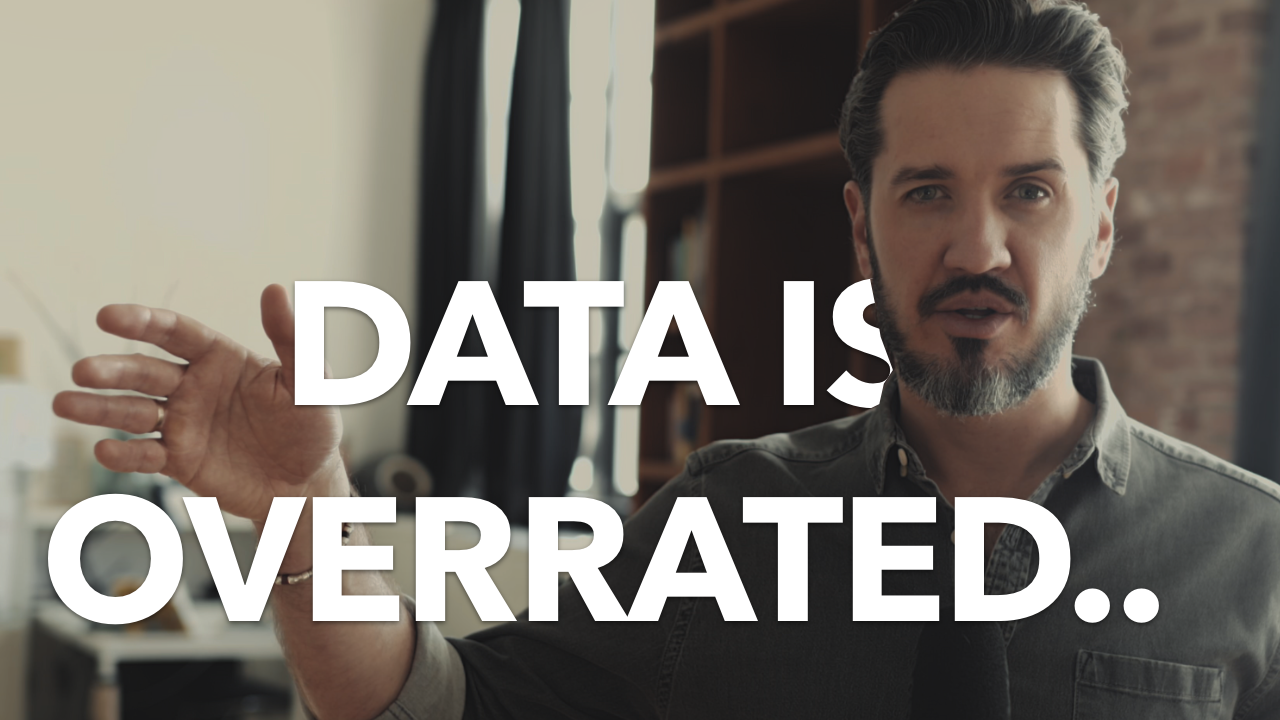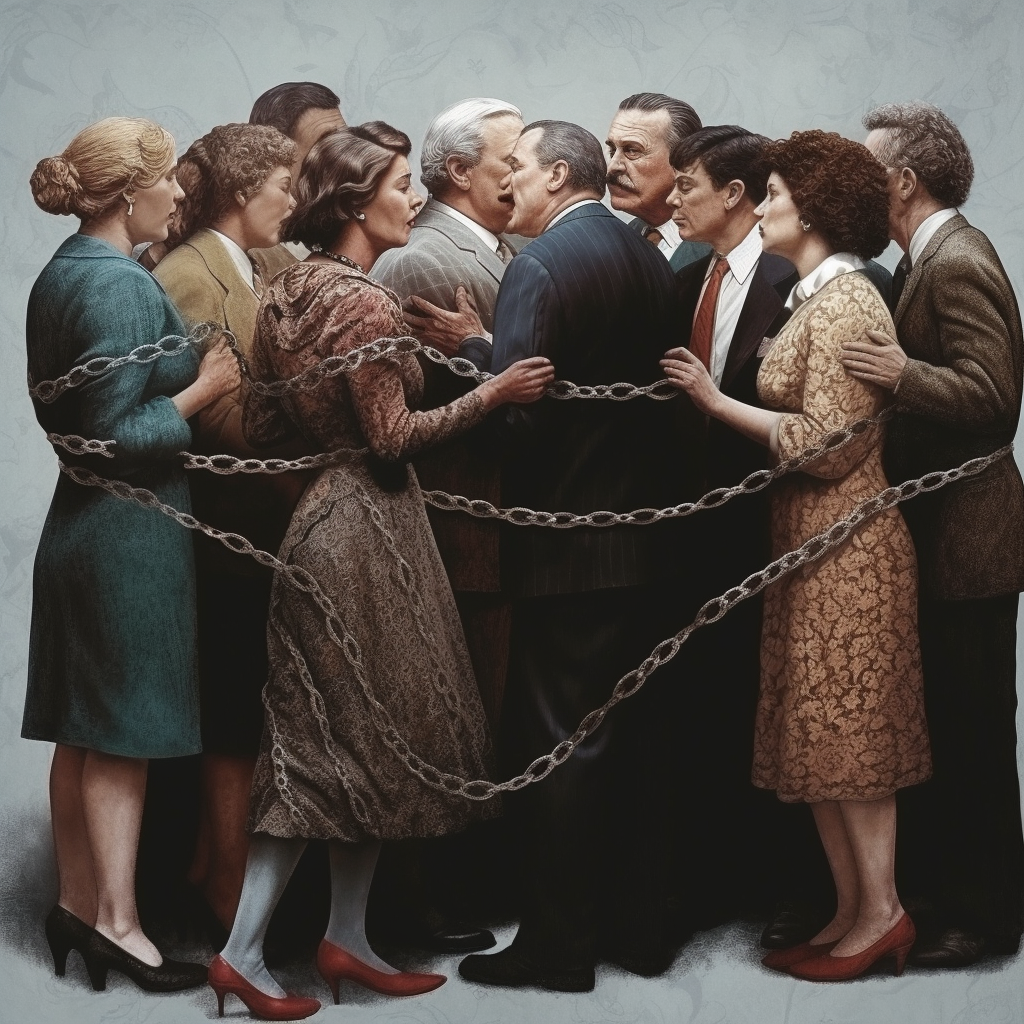
I can already hear the sirens and helicopter blades in the air.. The Chief data officers are plotting my assassination. What am I saying? Data is useless? Overrated? Are you nuts, Alex?
Wait wait.. Heard me out first. Maybe I’m not saying what you’re thinking.. Or am I?
Just for a second, ask yourself this: what if the endless pursuit of data is a red herring in the enterprise industry?
What if we, as enterprise tech executives, been chasing after the wrong goal, fixated on numbers and stats, while missing the real jackpot – user engagement?
In our world, where every click, swipe, and interaction is meticulously logged and analyzed, we've come to worship at the altar of data.
We've been conditioned to believe that more data points, more triggered notifications, and more graphs and PPTX pages equate to value.
But what if this is a grand illusion, a deceptive narrative that's led us astray?
Maybe, just maybe.. it's time to pause and ponder: are we truly understanding the needs and desires of our users, be it internal FTEs or external consumers? Or are we lost in a sea of data, mistaking noise for treasure?
Last year we were very close to releasing an app for network marketing professionals. It was supposed to be a data-driven powerhouse with a ton of proactive push notifications and automatic reports appearing in your inbox daily.
Then almost before the release, we decided to speak with 10 key people in the industry. And in 24 hours we ended up pulling the “full reverse” lever and turning our ship 180 degrees, because of what we heard.
They literally said, and I quote: “I’m already receiving more than 10,000 notifications per month. I don’t need more data. I just need something to my get tasks done. I don’t even wanna know how it’s done.”
This changed everything: how we thought of the problem, the solution and data.
Around the same time a friend of mine told me a story about an internal product his software company was developing for a giant Entertainment conglomerate in New York.
2 years in, a ton of features, beautiful complicated real-time graphs, all kinds of fancy reports and notifications. Only to find out that people it was designed for still preferred to use Google Sheets and didn’t want to switch.
A logical robust secure data-driven solution does not guarantee a smooth adoption even among internal FTEs. That’s a hard pill to swallow for a lot of CTOs and CIOs. But it’s also something they are traditionally not always very good at.
Do you know why teen apps like “Gas” are blowing up among the school children in the US (have you even heard of Gas?) Because teens value experiences rather than how many more valuable features you have on your backlog.
They, like most people today, prefer to not know ho the sauce is made. We want our problems to disappear. Don’t make us aware of more problems. We’re already stressed out enough.
If you’re able to point at a problem, then you’re even in a better position than me to solve the problem for me. I want to you do notify me only of things that make me happy - like how much money your solution has made me today, how many new customers your algorithm has brought in or how many more hours of family time I’m about to have thanks to what you did.
When was the last time you felt the joy of true innovation?
Most likely, your feeling of satisfaction at the end of the year comes from hitting your data-driven milestones and collecting your bonus check. But innovation moves the needle. There is always stuff to do. Especially in IT.
You can cut out your IT team from any business-2-IT communication for a year and in 1 year you’ll find their backlog of tasks has doubled. But that’s the core issue I’m talking about today. We’re no longer in the calm waters of predefined enterprise sailing. We’re entering a storm that promises to become a "Hurricane AI” soon, and it’s gonna be a level 6 one.
In the 2015 “The Bridge of Spies” starring Tom Hanks, one of the main characters who was an informant who knew he’d be dead if exchanged, kept asking this question after every proposition he was receiving: “Will it help?”
We need to be asking ourselves this question all the time when we take on new projects - will it move the needle? Will giving people more data-driven features significantly improve their experience and our competitive position?
When was the last time you seriously considered upgrading your product UI?
I mean, 99% of mobile banking apps are ugly as hell. They do the job, but do they move the needle?
99% of standard corporate mobile apps are just weak copies of their desktop websites. That’s not a wise way to use the platform, it’s a waste of digital real estate and resources.
When was the last time your entire team really sat down to analyze user behavior session by session, screen by screen? Do you even have means to track all that?
And yet - you’re pushing for more data-driven development. But maybe it’s because you understand it well and it’s an easy sell. When it does nothing - you can simply say “wrong data set, let’s find a new one”.
But that’s not the world we’re living in anymore. Now, I’m not saying - ditch the data-driven model and only focus on teen-style experiences.
No, of course not. Data is oil to your engine, not fuel. The fuel is adoption, engagement and network effect. Stop putting oil into your cylinders thinking just because it burns it’s as good as high-octane gas. It’s not.
Anyone will tell you - data is boring and people are lazy by default. Now combine these 2 and you will understand why 90% of big non-tech enterprise companies have not released any meaningful digital product in the past 20 years.
You can be different.
And you need to start yesterday. It’s absolutely not too late, because your competitors are gonna be dragging their feet a couple more years until Microsoft sells them an all-in-one Office 365 package to keep them average, but moderately profitable.
If that’s what you want - just have to wait 2 or 3 years.
if you want to feel the joy of creation, the excitement of idea turning into smiles on people’s faces, the power of creating something that moves the needle - then it’s time to wake up and act.



